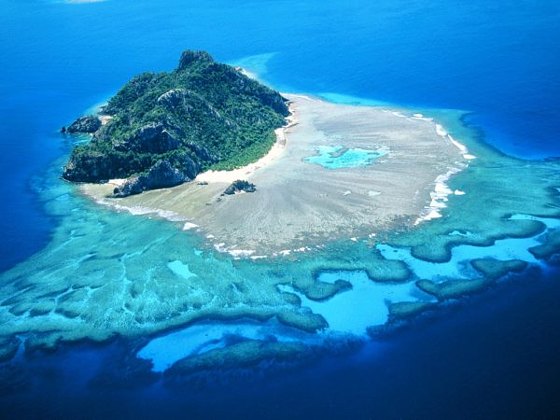Viti Levu is one of the largest Fiji islands. Being an archipelago we can assume that the islands must have come from some sort of volcanic activity. Fiji happens to lay between the Australian- Indian and the Pacific plate boundary. This subduction zone leads to not only Fiji being formed, but all of the islands in that part of the ocean.
This island was formed much like the Andes Mountains except that it is an ocean plate subducting under another ocean plate. This creates heat as the two plates rub against each other creating enough heat to melt the rock causing it to rise to the surface. Several volcanoes began to form from these pockets of magma rising. Mt. Tomanivi, formally known as Mt. Victoria, is the volcano on Viti Levu. It is a shield volcano, but after being underwater several times and with land moving from tectonic forces it became a different shape.


